With new technologies revolutionizing data collection, wildlife researchers are becoming increasingly able to collect data at much higher volumes than ever before. Now we are facing the challenges of putting this information to use, bringing the science of big data into the conservation arena. With the help of machine learning tools, this area holds immense potential for conservation practices. The applications range from online trafficking alerts to species-specific early warning systems to efficient movement and biodiversity monitoring and beyond.
However, the process of building effective machine learning tools depends upon large amounts of standardized training data, and conservationists currently lack an established system for standardization. How to best develop such a system and incentivize data sharing are questions at the forefront of this work. There are currently multiple AI-based conservation initiatives, including Wildlife Insights and WildBook, that are pioneering applications on this front.
This group is the perfect place to ask all your AI-related questions, no matter your skill level or previous familiarity! You'll find resources, meet other members with similar questions and experts who can answer them, and engage in exciting collaborative opportunities together.
Just getting started with AI in conservation? Check out our introduction tutorial, How Do I Train My First Machine Learning Model? with Daniel Situnayake, and our Virtual Meetup on Big Data. If you're coming from the more technical side of AI/ML, Sara Beery runs an AI for Conservation slack channel that might be of interest. Message her for an invite.
Header Image: Dr Claire Burke / @CBurkeSci

Explore the Basics: AI
Understanding the possibilities for incorporating new technology into your work can feel overwhelming. With so many tools available, so many resources to keep up with, and so many innovative projects happening around the world and in our community, it's easy to lose sight of how and why these new technologies matter, and how they can be practically applied to your projects.
Machine learning has huge potential in conservation tech, and its applications are growing every day! But the tradeoff of that potential is a big learning curve - or so it seems to those starting out with this powerful tool!
To help you explore the potential of AI (and prepare for some of our upcoming AI-themed events!), we've compiled simple, key resources, conversations, and videos to highlight the possibilities:
Three Resources for Beginners:
- Everything I know about Machine Learning and Camera Traps, Dan Morris | Resource library, camera traps, machine learning
- Using Computer Vision to Protect Endangered Species, Kasim Rafiq | Machine learning, data analysis, big cats
- Resource: WildID | WildID
Three Forum Threads for Beginners:
- I made an open-source tool to help you sort camera trap images | Petar Gyurov, Camera Traps
- Batch / Automated Cloud Processing | Chris Nicolas, Acoustic Monitoring
- Looking for help with camera trapping for Jaguars: Software for species ID and database building | Carmina Gutierrez, AI for Conservation
Three Tutorials for Beginners:
- How do I get started using machine learning for my camera traps? | Sara Beery, Tech Tutors
- How do I train my first machine learning model? | Daniel Situnayake, Tech Tutors
- Big Data in Conservation | Dave Thau, Dan Morris, Sarah Davidson, Virtual Meetups
Want to know more about AI, or have your specific machine learning questions answered by experts in the WILDLABS community? Make sure you join the conversation in our AI for Conservation group!
No showcases have been added to this group yet.
- 0 Resources
- 0 Discussions
- 4 Groups
- @waruip2002
- | Mr
Peter Warui is the Group CEO of Molo Constituency Forest Association in Kenya. He leads efforts in watershed protection, tree planting in schools and communities, and promoting sustainable resource use since 2007. His group empowers youth and communities on forest conservation an
- 0 Resources
- 1 Discussions
- 1 Groups
Building Animal Detect: Software tool to process wildlife data in minutes using latest cool tech.





- 0 Resources
- 32 Discussions
- 3 Groups
Stop The Desert
Founder of Stop The Desert, leading global efforts in regenerative agriculture, sustainable travel, and inclusive development.

- 0 Resources
- 3 Discussions
- 8 Groups
- @annavallery
- | she/her
Seabird biologist experienced in research and applied conservation. Dedicated to conducting and using innovative research to inform conservation decisions.

- 0 Resources
- 3 Discussions
- 7 Groups
WILDLABS & Wildlife Conservation Society (WCS)
I'm the Bioacoustics Research Analyst at WILDLABS. I'm a marine biologist with particular interest in the acoustics behavior of cetaceans. I'm also a backend web developer, hoping to use technology to improve wildlife conservation efforts.




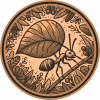
- 41 Resources
- 38 Discussions
- 33 Groups
University of Exeter
AI and Electronic Engineer interested in insect monitoring and conservation technology. PhD student at the University of Exeter!
- 0 Resources
- 3 Discussions
- 4 Groups
- @ginevrabellini
- | She/her
I am an ecologist by training and at the moment I work as community manager at the WiNoDa Knowledge Lab of the Museum für Naturkunde Berlin. As a data competence center, we offer free educational resources for researchers working with natural science collections and biodiversity

- 4 Resources
- 2 Discussions
- 5 Groups
- 0 Resources
- 0 Discussions
- 2 Groups
R & D Tech | Industrial Designer | Wildlife Management Technology



- 0 Resources
- 93 Discussions
- 6 Groups
Using Digital to help smallholder farmers regreen their land
- 0 Resources
- 1 Discussions
- 2 Groups
- @carlybatist
- | she/her
ecoacoustics, biodiversity monitoring, nature tech



- 113 Resources
- 361 Discussions
- 19 Groups
Conservation International is proud to announce the launch of the Nature Tech for Biodiversity Sector Map, developed in partnership with the Nature Tech Collective!
1 April 2025
$3 millions of funding for NGO in Brazil using AI for conservation / $ 3 milhões em financiamento para ONGs no Brasil que usam IA para conservação!
1 April 2025
Funding
I have been a bit distracted the past months by my move from Costa Rica to Spain ( all went well, thank you, I just miss the rain forest and the Ticos ) and have to catch up on funding calls. Because I still have little...
28 March 2025
Funding
The AI Weather Quest, organised by the European Centre for Medium-Range Weather Forecasts (ECMWF), is an ambitious international competition designed to harness artificial intelligence (AI) and machine learning (ML) in...
25 March 2025
InsectSet459 - the first large-scale open dataset of insect sounds, featuring 26,399 audio clips from 459 species of Orthoptera and Cicadidae.
24 March 2025
Naturalis is looking for a postdoc in AI for Ultrasonic Bioacoustic Monitoring
24 March 2025
Funding
The Compute for Climate Fellowship is a global R&D funding program that empowers climate tech startups to leverage advanced cloud computing and AI in the fight against climate change.
22 March 2025
Absolutely fascinating uses of AI for equitable conservation! Hope it inspires you!
21 March 2025
Naturalis is looking for a postdoc in AI for Ultrasonic Bioacoustic Monitoring!
21 March 2025
This thesis concludes that artificial intelligence offers valuable opportunities for mitigating the impacts of climate change on wildlife with careful consideration of its limitations and ethical implications.
10 March 2025
WWF's Arctic Community Wildlife Grants program supports conservation, stewardship, and research initiatives that focus on coastal Arctic ecology, community sustainability, and priority Arctic wildlife, including polar...
7 March 2025
Join the FathomNet Kaggle Competition to show us how you would develop a model that can accurately classify varying taxonomic ranks!
4 March 2025
August 2025
event
September 2025
event
event
event
event
October 2025
event
event
event
December 2025
event
March 2026
August 2025
event
July 2025
17 Products
Recently updated products
| Description | Activity | Replies | Groups | Updated |
|---|---|---|---|---|
| Environment conservation in Great Rift Valley. |
|
AI for Conservation | 8 minutes 42 seconds ago | |
| Hi Chris! Send me a direct message and we can have a chat! |
+5
|
AI for Conservation, Autonomous Camera Traps for Insects, Camera Traps | 11 hours 24 minutes ago | |
| Hey people of the world. 10 days ago I posted here about our new GUI tool where one could drag-n-drop an image and get animals detected on... |
|
AI for Conservation | 1 day 6 hours ago | |
| Hi @CourtneyShuert We support NOAA with AI for individual ID for belugas (but from aerial and from lateral surface too). If some of our techniques can be cross-applied... |
|
AI for Conservation, Data management and processing tools | 6 days 18 hours ago | |
| Hello Eugene, I just tried your service:Was wondering how possible will it be to have the option to upload a second image and have a comparison running to let the user know if... |
|
AI for Conservation, Camera Traps, Data management and processing tools, Software Development | 1 week ago | |
| Kudos for such an innovative approach—integrating additional sensors with acoustic recorders is a brilliant step forward! I'm especially interested in how you tackle energy... |
|
Acoustics, AI for Conservation, Latin America Community, Open Source Solutions | 1 week ago | |
| Thank you for your reply! It surely helps, we have use exif for a while to read metadata from images, when there is information available. Could be nice to maybe see if we... |
|
AI for Conservation, Camera Traps | 1 week 3 days ago | |
| You could just throw out that data, but I think you'd be doing yourself a disservice and missing out on some interesting insights. Are you training the AI with just pre-COVID... |
|
AI for Conservation, Animal Movement, Data management and processing tools, Human-Wildlife Coexistence | 1 week 6 days ago | |
| Would love to collaborate on this we are curently building agents for conservation Kind regardsOlivier |
|
AI for Conservation, Community Base | 2 weeks ago | |
| This is such a compelling direction, especially the idea of linking unsupervised vocalisation clustering to generative models for controlled playback. I haven’t seen much done... |
|
Acoustics, AI for Conservation, Emerging Tech | 2 weeks 2 days ago | |
| Hello.I am in need of assistance.I need a website for a project I am working on.Thanks 😊 |
|
Software Development, AI for Conservation | 2 weeks 4 days ago | |
| Wow this is amazing! This is how we integrate Biology and Information Technology. |
|
Camera Traps, AI for Conservation, Build Your Own Data Logger Community, Data management and processing tools, Marine Conservation, Protected Area Management Tools, Geospatial | 2 weeks 4 days ago |
Mau Consavation
Mini AI Wildlife Monitor
25 June 2025 12:27pm
14 August 2025 12:55am
Aloha Luke,
This is an amazing tool that you have created. Are your cameras availble for purchase? We use a lot of camera traps in the Hono O Na Pali Natural Area Reserve on Kauai to pasively detect animals. We do not have the staff knowledge and capacity to build our own camera traps like this.
15 August 2025 7:53am
Hi Chris!
Send me a direct message and we can have a chat!
International Conference on Computer Vision, ICCV 2025
14 August 2025 2:41pm
API endpoint to detect & classify animals
14 August 2025 12:54pm
Tracking Individual Whales in 360-degree Videos
28 July 2025 1:22am
5 August 2025 5:20pm
Hey Courtney! I've just sent you an email about coming on Variety Hour to talk about your work :) Looking forward to hearing from you!
8 August 2025 4:40pm
Have you tried using Insta360's DeepTrack feature on your Studio desktop app? We have used it for similar use cases and it worked well. I would love to hear if it works for your science objectives. We are also experimenting and would love to know your thoughts. :) https://youtu.be/z8WKtdPCL_E?t=123
9 August 2025 12:44am
Hi @CourtneyShuert
We support NOAA with AI for individual ID for belugas (but from aerial and from lateral surface too). If some of our techniques can be cross-applied please reach out: jason at wildme dot org
Cheers,
Jason
Free online tool to analyze wildlife images
4 August 2025 8:01am
8 August 2025 5:23pm
Hello Eugene, I just tried your service: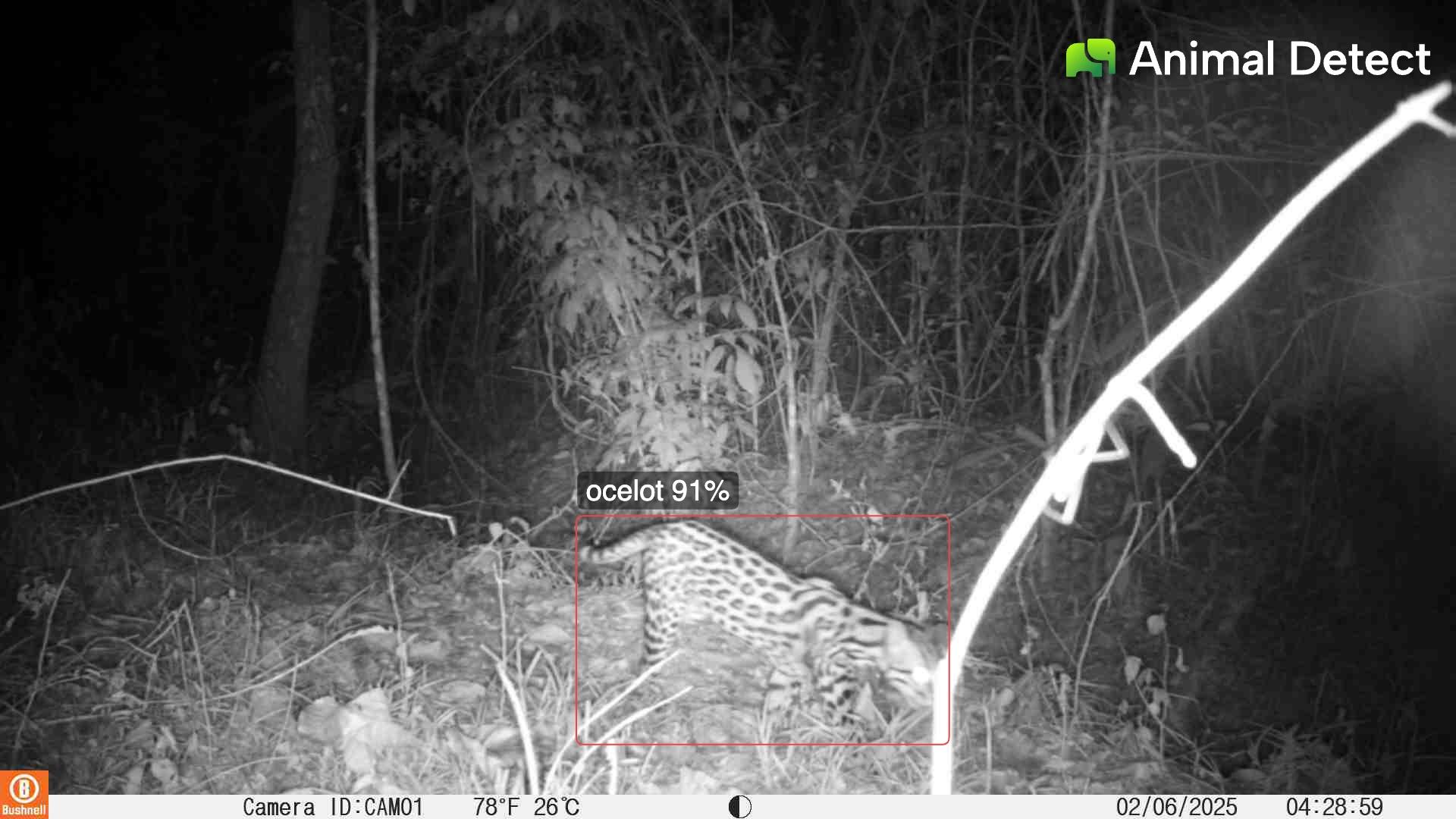
Was wondering how possible will it be to have the option to upload a second image and have a comparison running to let the user know if body patterns are: 'same' or 'different', helping to identify individuals.
Thanks and kind regards from Colombia,
Alejo
🐸 WILDLABS Awards 2025: Open-Source Solutions for Amphibian Monitoring: Adapting Autonomous Recording Devices (ARDs) and AI-Based Detection in Patagonia
27 May 2025 8:39pm
7 August 2025 9:27pm
Project Update — Sensors, Sounds, and DIY Solutions (sensores, sonidos y soluciones caseras)
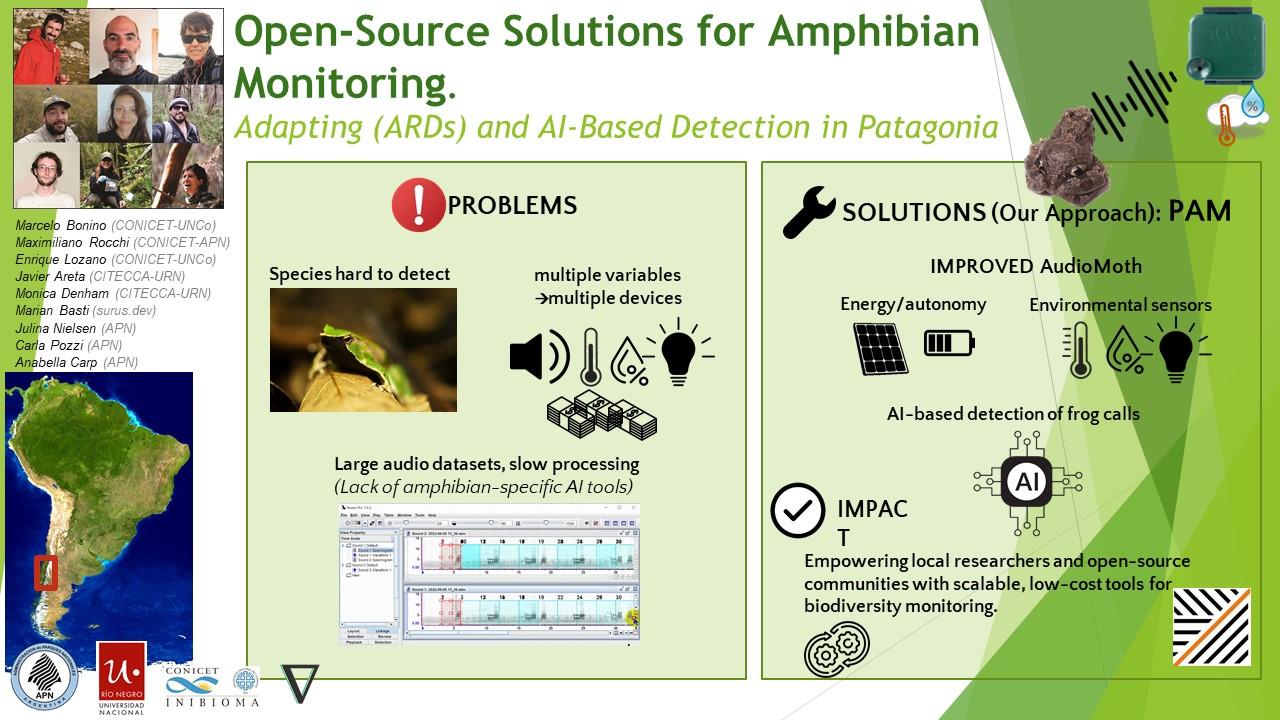
We continue making progress on our bioacoustics project focused on the conservation of Patagonian amphibians, thanks to the support of WILDLABS. Here are some of the areas we’ve been working on in recent months:
(Seguimos avanzando en nuestro proyecto de bioacústica aplicada a la conservación de anfibios patagónicos, gracias al apoyo de WildLabs.Queremos compartir algunos de los frentes en los que estuvimos trabajando estos meses)
1. Hardware
One of our main goals was to explore how to improve AudioMoth recorders to capture not only sound but also key environmental variables for amphibian monitoring. We tested an implementation of the I2C protocol using bit banging via the GPIO pins, allowing us to connect external sensors. The modified firmware is already available in our repository:
👉 https://gitlab.com/emiliobascary/audiomoth
We are still working on managing power consumption and integrating specific sensors, but the initial tests have been promising.
(Uno de nuestros principales objetivos fue explorar cómo mejorar las grabadoras AudioMoth para que registren no sólo sonido, sino también variables ambientales clave para el monitoreo de anfibios. Probamos una implementación del protocolo I2C mediante bit banging en los pines GPIO, lo que permite conectar sensores externos. La modificación del firmware ya está disponible en nuestro repositorio:
https://gitlab.com/emiliobascary/audiomoth
Aún estamos trabajando en la gestión del consumo energético y en incorporar sensores específicos, pero los primeros ensayos son alentadores.)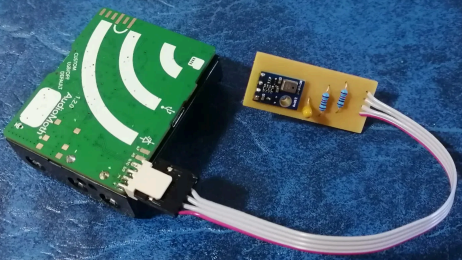
2. Software (AI)
We explored different strategies for automatically detecting vocalizations in complex acoustic landscapes.
BirdNET is by far the most widely used, but we noted that it’s implemented in TensorFlow — a library that is becoming somewhat outdated.
This gave us the opportunity to reimplement it in PyTorch (currently the most widely used and actively maintained deep learning library) and begin pretraining a new model using AnuraSet and our own data. Given the rapid evolution of neural network architectures, we also took the chance to experiment with Transformers — specifically, Whisper and DeltaNet.
Our code and progress will be shared soon on GitHub.
(Exploramos diferentes estrategias para la detección automática de vocalizaciones en paisajes acústicos complejos. La más utilizada por lejos es BirdNet, aunque notamos que está implementado en TensorFlow, una libreria de que está quedando al margen. Aprovechamos la oportunidad para reimplementarla en PyTorch (la librería de deep learning con mayor mantenimiento y más popular hoy en día) y realizar un nuevo pre-entrenamiento basado en AnuraSet y nuestros propios datos. Dado la rápida evolución de las arquitecturas de redes neuronales disponibles, tomamos la oportunidad para implementar y experimentar con Transformers. Más específicamente Whisper y DeltaNet. Nuestro código y avances irán siendo compartidos en GitHub.)
3. Miscellaneous
Alongside hardware and software, we’ve been refining our workflow.
We found interesting points of alignment with the “Safe and Sound: a standard for bioacoustic data” initiative (still in progress), which offers clear guidelines for folder structure and data handling in bioacoustics. This is helping us design protocols that ensure organization, traceability, and future reuse of our data.
We also discussed annotation criteria with @jsulloa to ensure consistent and replicable labeling that supports the training of automatic models.
We're excited to continue sharing experiences with the Latin America Community— we know we share many of the same challenges, but also great potential to apply these technologies to conservation in our region.
(Además del trabajo en hardware y software, estamos afinando nuestro flujo de trabajo. Encontramos puntos de articulación muy interesantes con la iniciativa “Safe and Sound: a standard for bioacoustic data” (todavía en progreso), que ofrece lineamientos claros sobre la estructura de carpetas y el manejo de datos bioacústicos. Esto nos está ayudando a diseñar protocolos que garanticen orden, trazabilidad y reutilización futura de la información. También discutimos criterios de etiquetado con @jsulloa, para lograr anotaciones consistentes y replicables que faciliten el entrenamiento de modelos automáticos. Estamos entusiasmados por seguir compartiendo experiencias con Latin America Community , con quienes sabemos que compartimos muchos desafíos, pero también un enorme potencial para aplicar estas tecnologías a la conservación en nuestra región.)
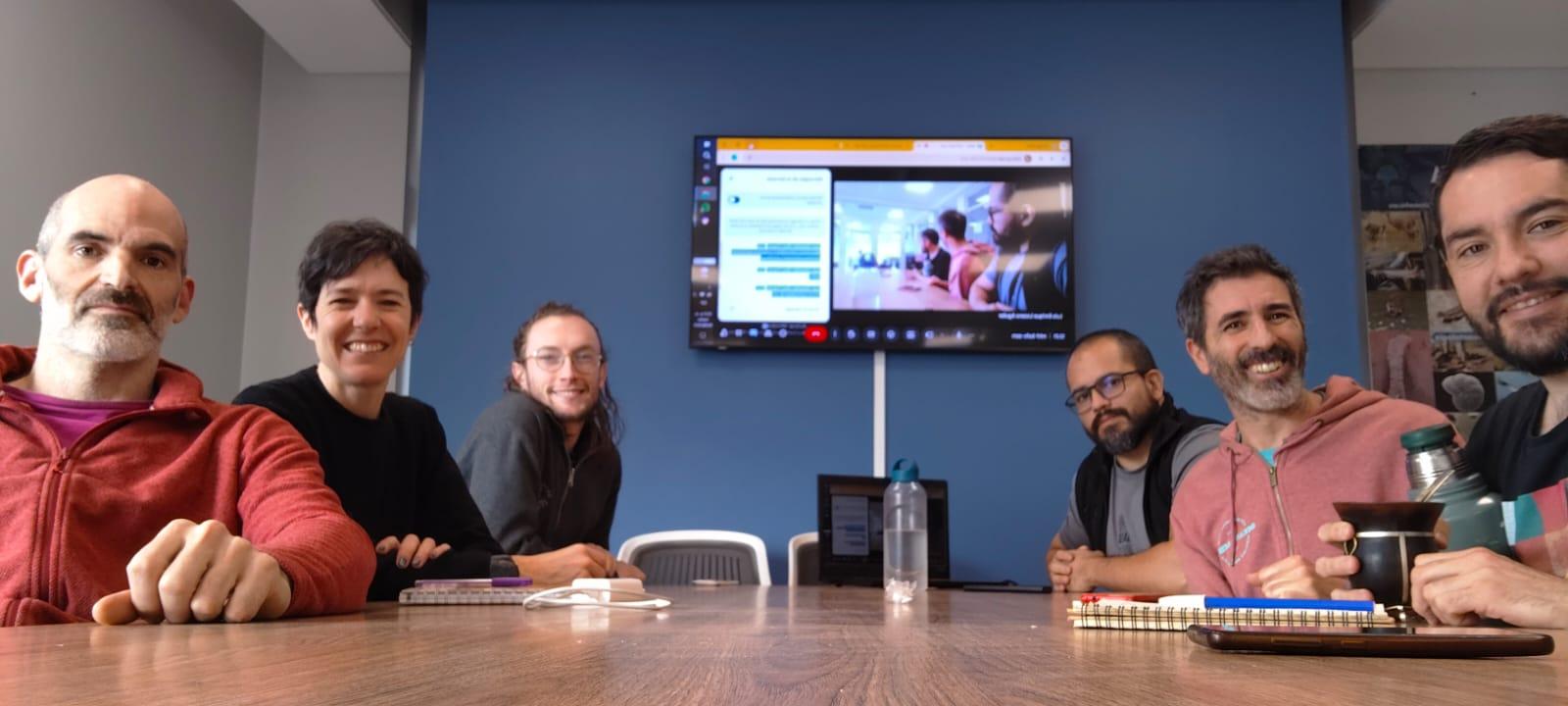
7 August 2025 10:02pm
Love this team <3
We would love to connect with teams also working on the whole AI pipeline- pretraining, finetuning and deployment! Training of the models is in progress, and we know lots can be learned from your experiences!
Also, we are approaching the UI design and development from the software-on-demand philosophy. Why depend on third-party software, having to learn, adapt and comply to their UX and ecosystem? Thanks to agentic AI in our IDEs we can quickly and reliably iterate towards tools designed to satisfy our own specific needs and practices, putting the researcher first.
Your ideas, thoughts or critiques are very much welcome!
8 August 2025 1:20pm
Kudos for such an innovative approach—integrating additional sensors with acoustic recorders is a brilliant step forward! I'm especially interested in how you tackle energy autonomy, which I personally see as the main limitation of Audiomoths
Looking forward to seeing how your system evolves!
Klarna’s AI for Climate Resilience Program
6 August 2025 6:32pm
Tech4Nature Presents: 2025 Innovation Challenge Workshop Series - Registration Now Open!
6 August 2025 5:09pm
Tech4Nature Presents: 2025 Innovation Challenge Workshop Series - Registration Now Open!
6 August 2025 5:09pm
Tech4Nature Presents: 2025 Innovation Challenge Workshop Series - Registration Now Open!
6 August 2025 5:08pm
AI for Conservation Office Hours: 2025 Review
 Jake Burton
and 1 more
Jake Burton
and 1 more
6 August 2025 2:16pm
Collaborate on Conservation Tech Publications With HAAG
5 August 2025 11:46pm
PV Nature is recruiting members to its Technical Advisory Committee
5 August 2025 4:03pm
What metadata is used from trail camera images?
31 July 2025 8:52am
4 August 2025 11:00pm
Hi Hugo, it's great that you are thinking about adding metadata features to Animal Detect! I'll share what I think would be useful from my perspective, but I think there is a lot of variation in how folks handle their image organization.
Time and date are probably the most important features. I rename my image files using the camtrapR package, which uses Exiftool to read file metadata and append date and time to the filename. I find this method to be very robust because of the ability to change datetimes if needed -- for example, if the camera was programmed incorrectly, you can apply a timeshift to ensure they are correct in the filenames. Are you considering adding Exif capability directly to Animal Detect? Otherwise, I think that having a tool to parse filenames would be very helpful, where users could specify which parts of the filename correspond to camera site, date, time, etc., so that this information is included in downstream processing tasks.
I have found it frustrating that information such as camera name and temperature are not included in file metadata by many camera manufacturers. I have used OCR to extract the information in these cases, but it requires a bit of manual review, and I wouldn't say this is a regular part of my workflow.
Camera brand and model can be useful for analysis, and image dimensions and burst sequence can be helpful for computer vision tasks.
Hope this helps!
Cara
5 August 2025 7:43am
Thank you for your reply!
It surely helps, we have use exif for a while to read metadata from images, when there is information available. Could be nice to maybe see if we could “write” some of the data into the metadata of the image, instead of just reading. Really good idea with the filename changes and structure. I will add it to a list of possible improvements and see if/how we could implement it.
Again, thanks for the feedback 😊
2025 Workshop on Camera Traps, AI, and Ecology
4 August 2025 10:47am
How do you tackle the anomalous data during the COVID period when doing analysis?
21 July 2025 8:55am
25 July 2025 3:06pm
To clarify, are you talking about a model that carries out automated detection of vocalizations? or a model that detects specific patterns of behavior/movement? I would suspect that the former is not something that may be impacted while training as the fundamental vocalizations/input is not going to change drastically (although see Derryberry et al., where they show variation in spectral characteristics of sparrows at short distance pre and post-covid lockdowns).
28 July 2025 6:14pm
I'm specifically referring to movement of animals affected by anthropogenic factors. My question has nothing to do with vocalisations.
Humans were essentially removed from large sections of the world during covid and that surely had some effects on wildlife movements, or at least I am assuming it did. But that would not be the regular "trend". If I try to predict the movement of a species over an area frequented by humans, that surely comes into the picture - and so does their absence.
My question is very specific to dealing with data that has absence (or limited interference) of humans during the covid period in all habitats.
1 August 2025 10:24pm
You could just throw out that data, but I think you'd be doing yourself a disservice and missing out on some interesting insights. Are you training the AI with just pre-COVID animal movement data or are you including context on anthropogenic factors as well? Not sure if you are looking at an area that has available visitor/human population data, but if you include that with animal movement data across all years it should net out in the end.
What questions would you ask an AI agent for conservation tech?
8 July 2025 5:49pm
21 July 2025 12:14am
I think a conservation tech agent would be most useful if it connects directly to existing WILDLABS resources, rather than trying to replace tools.
Ideally, it could Link questions to projects from the WILDLABS Awards or The Inventory, as well Suggest relevant forum discussions Recommend community members with similar experience. An then at the end propose technical solutions like ML models, devices, or toolkits for specific tasks
I'm thinking of doing something like...
prompt
"How can I detect when an insect is attacking a tree using dendrometer data?"
agent
This is a time-series event detection problem. Based on previous project in WildLabs a BiLSTM neural network can be trained to recognise attack patterns by analysing the sequence of stem diameter changes before, during, and after an attack. These patterns may include sudden shrinkage or irregular oscillations caused by stress or resin production.
The agent could then link to:
- Projects using sensors or time-series AI in behaviours or events monitoring
- Open-source tools for LSTM-based classification
- Forum threads or community contacts who’ve worked on similar topics, models, tools, etc
31 July 2025 3:59pm
I agree with Jorge that an AI agent could be useful to help search the vast repository of existing discussions on WildLabs. For example: in this thread below, Maristela could have asked her question to the agent and (hopefully) been directed to the link that Akiba mentioned.
However, one issue I can see with using an AI agent instead of asking a question as currently, is if there is no record of the questions asked to the agent. A great strengths of WildLabs (and online forums) is that, because questions are recorded and visible, other members can learn from others' questions. If questions start being "hidden" in the agent's memory, other members can hardly learn from them.
1 August 2025 2:32pm
Would love to collaborate on this we are curently building agents for conservation
Kind regards
Olivier
Unlocking AI for Nonprofits: Enroll in Nethope's New AI Skills Course for Nonprofits
31 July 2025 4:45pm
A technical and conceptual curiosity... Could generative AI help us simulate or decode animal communication?
21 July 2025 1:04am
25 July 2025 2:30pm
Hi Jorge,
I think you'll find this research interesting: https://blog.google/technology/ai/dolphingemma/
Google's researchers did exactly that. They trained an LLM on dolphin vocalizations to produce continuation output, exactly as in the autoregressive papers you've mentioned, VALL-E or WaveNet.
I think they plan to test it in the field this summer and see if it will produce any interesting interaction.
Looking forward to see what they'll find :)
Besides, two more cool organizations working in the field of language understanding of animals using AI:
28 July 2025 3:51pm
This is a really fascinating concept. I’ve been thinking about similar overlaps between AI and animal communication, especially for conservation applications. Definitely interested in seeing where this kind of work goes.
30 July 2025 9:46am
This is such a compelling direction, especially the idea of linking unsupervised vocalisation clustering to generative models for controlled playback. I haven’t seen much done with SpecGAN or AudioLDM in this space yet, but the potential is huge. Definitely curious how the field might adopt this for species beyond whales. Following this thread closely!
Offering free help for ocean conservation projects (tech, UX, automation, AI)
28 July 2025 6:48am
28 July 2025 6:40pm
Hello.
I am in need of assistance.
I need a website for a project I am working on.
Thanks 😊
GeoCroissant Survey
28 July 2025 5:16pm
PhD position AI for coral reefs
28 July 2025 3:23pm
Jupyter Notebook: Aquatic Computer Vision
25 January 2024 5:50am
27 January 2024 4:07am
This definitely seems like the community to do it. I was looking at the thread about wolf detection and it seems like people here are no strangers to image classification. A little overwhelming to be quite honest 😂
While it would be incredible to have a powerful model that was capable of auto-classifying everything right away and storing all the detected creatures & correlated sensor data straight into a database - I wonder if in remote cases where power (and therefore cpu bandwidth), data storage, and network connectivity is at a premium if it would be more valuable to just be able to highlight moments of interest for lab analysis later? OR if you do you have cellular connection, you could download just those moments of interest and not hours and hours of footage?
27 January 2024 6:11am
Am working on similar AI challenge at the moment. Hoping to translate my workflow to wolves in future if needed.
We all are little overstretched but it there is no pressing deadlines, it should be possible to explore building efficient model for object detection and looking at suitable hardware for running these model on the edge.
28 July 2025 1:20pm
Wow this is amazing! This is how we integrate Biology and Information Technology.
Leveraging AI & Big Data For Love Of The Environment
26 July 2025 8:00am
28 July 2025 6:59am
Búsqueda de desarrollador de IA - Instituto Humboldt
25 July 2025 3:49pm
Looking for Computer Vision person for citizen science app
24 July 2025 1:08am
25 July 2025 6:02am
Hi, I am a PhD student in computer science and currently working in Animal emotion detection. I would be happy to join your team.
MS and PhD Opportunities in Ocean Engineering and Oceanography (Fall 2026)
24 July 2025 5:55am
Excited about AI in Conservation
21 July 2025 2:03pm
Exploring the Wild Edge: A Proposal for a New WILDLABS Group
9 June 2025 5:41pm
13 July 2025 5:02pm
This sounds like a great idea, this is an area that I want to do more work in,
Where can I sign up.
15 July 2025 5:43pm
Hey Stuart,
Thank you for your interest! We're glad you'd like to be part of our journey. We're still in the process of setting up the group, and we'll let you know as soon as we're ready.
Thanks for your understanding! 🤗
18 July 2025 2:22pm
Hello Youssef,
Yes, let's keep contact. I'm currently looking for good conferences to publish my work, if you are aware of something, please let me know.

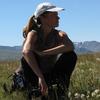

























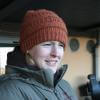













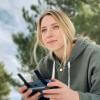














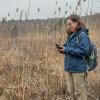

















26 July 2025 7:04am
A side note, For insects you'll need an higher resolution camera. The Mothbox porject uses a 64MP camera
Parts List | Mothbox
Open Source Low Cost DIY Nocturnal Insect Monitoring